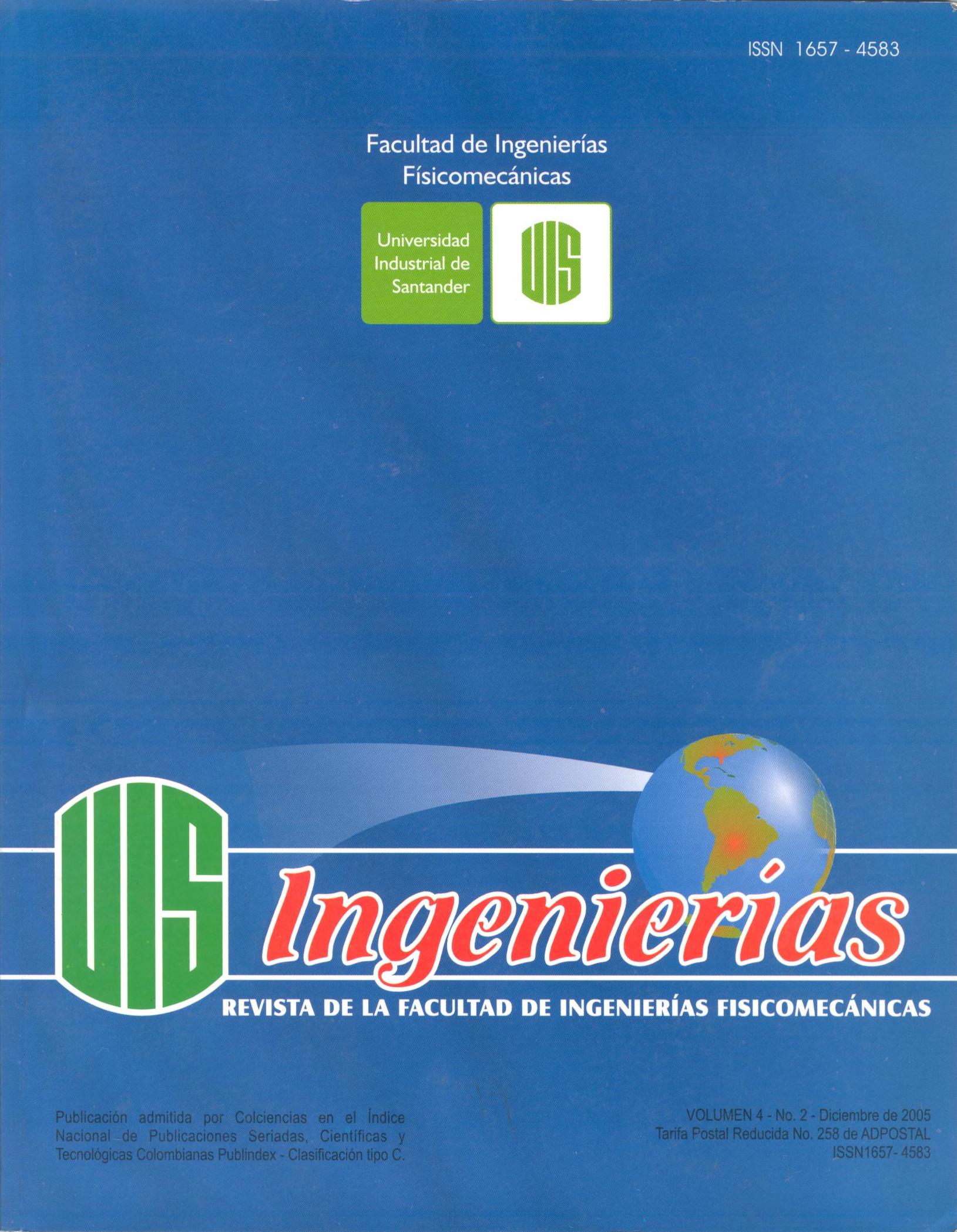Published 2005-12-01
Keywords
- CSCL,
- Collaborative Practical,
- Structured Programming,
- On-line Education,
- Environments for support to the teaching and the learning
How to Cite
Abstract
The concepts and the abilities related with the programming bases (variables, types, expressions, assignment, input/output, conditional control structures among others) are key components in the formation process of the future systems engineers (similar to Similar to BsCS but with an Engineer degrees) . Taking into account that in many colombian universities the obtained results in subjects that deal with these concepts are not adequate, a process of learning based on practice has been established in order to increase the students academic level, decreasing desertion, fostering collaboration and promoting the knowledge and the abilities previously mentioned. This paper presents a collaborative practical method that allows to build an algorithm in groups conformed by two to four students; a computational tool is also described that supports the method, in order to make an appropriated interaction among group members. Finally, experimentation is described with favorable results. In order to define the collaborative activity, there were analyzed the most important characteristics of the traditional collaborative learning methods that allow to solve problems in different disciplines (free of content), some methods not free of content and the execution of the five basic elements of the collaborative learning defined by Johnson & Johnson, among other elements.
Downloads
References
DÍAZ, R., y GARZÓN, M. Informe de la Encuesta aplicada a los estudiantes de la FIET, sobre el curso
de Introducción a la Informática e Informática 1. Proyecto de grado titulado: <<Diseño y desarrollo de
un curso en linea de Introducción a la Informática utilizando las Tecnologlas de la Informacióro>. 2002.
JOHNSON,R.T. andJOHNSON, DW. <<AnOverview of Cooperative Leaming.» Creativity and
Collaborative Leaming Eds. Jacqneline Thousand, Villa, R. and Nevin, A. Baltimore, Paul H Brookes
Publishing.1994.
HENLEY, J. "Cooperative Learning: It's In There". http://tiger. coe .míssouri. edu/-vlib/Joan's.stuff/
Joan's.Page.html.
COLLAZOS, C., GUERRERO, L., PINO, 1. and OCHOA, S. "Evaluaring Collaborative Learuing
Pracesses". Praceedings of the 8th Interoational Workshop on Groupware (CRIWG'2002), Springer
VerlagLNCS, 2440, Heidelberg, Germany, September, 2002.
SOLLER, A., GOODMAN, B., LINTON, F. and GAIMARI, R. "Promoting effective peerinteraction .
in an Intelligent Collaborative Learoing System". In Proceedings of 4th Interoational Conference on
Intelligent Tutoring System. San Antonio, TX. 186-195.1998.
SOLLER, A., LESGOLD, A., UNTON, F. and GOODMAN, B. "What makes peer interaction effective? Modeling effective communication in an intelligent CSCL".AmericanAssociation for Artificial Intelligence. www.aai.org. 1999.
DILLENBOURG, P., BAKER, M., BLAYE, A. & O'MALLEY, C. "The evolution of Research on Collaborative Learning". In Spada, H. and Reimann, P. (Eds.) Learning in Humans andMachines. Elsevier.1996.
JOHNSON, R.T. and JOHNSON, D.W. "Handbook of Research for Educational Conununications and
Techno10gy". Edited by David H. Jonassen. 1997.
JOHNSON, D.W. and JOHNSON, R.T. "Aprender Juntos y Solos". Aprendizaje Cooperativo,
Competitivo e Individualista. (Ira Ed.).Aique Grupo Editor S.A. 1999.
PANITZ, T. "Collaborative versus Cooperative Learning - A comparison ofthe two concepts which
will help us understand the underlying nature of interctive leraning". Cooperative Learning and
College Teaching, V8, No. 2, Winter 1997. Ver Ted's Cooperative Learning e-book en http://home.capecod.netHpanitz/ebooklcontents.html.
SLAVIN, R.E. "Research For The Future: Research on Cooperative Learning and Achievement: Wbat
We Know, What We Need To Know». Contemporary Educational Psycho10gy, 21 (1),43-69. Center for
Research on tbe Education ofStudents Placed atRisk JoIma Hopkins University. October 1995.
McLAUGHLIN, C. and OLSON, a "Unblocking brainstorming through the use of a simple group
editor". Cognitive Science and Machine Intelligence Laboratory. University ofMichigan. ACM 0-89791-
543-7.1992.
GEHRINGER, E.F. "Strategies and mechanisrns for electronic peer review". Frontiers in Education.
Missouri. http://fie.engrng.pitt.edulfie2000/papers/1189.pdí. 2000.
GEHRINGER, E.F. "Buildingresourcesfor teaching computer architecture through electronic peer
review". Workshop on Computer Architecture Education. California, http://www4.ncsu.edu/-efg/
wcae/2003/submissions/gehringer.pdf.2003.
COLLAZOS, c., GUERRERO, L., PINO" STAHL,J. a and OCHOA, S. ''Using Gamesto Model and Evaluate
Collaborative Learning". ICLS, International Conference ofthe Learning Sciences, Santa Moniea,
CA -June 22-26,2004.
MILLIS, B.J. and COTTELL Jr, p.a "Cooperative learning for higher education facu1ty". American
Council on Education, Series on Higher Education. The Oryx Press, Phoenix,AZ. 1998.
OSBORN,A.F. "AppliedImagination" (Rev Ed.) New YorkScnbner.1957. [19] JOHNSON, D.W., JOHNSON, R.T. and SMITH, K.A. "Active learning: Cooperation in the college classroom". Edina, MN: Interaction BookCompany.
1991. 127
SLAVIN, R.E. "Cooperative learning: Theory, reserch, and practice (2nd ed.)". Boston: Allyu &
Bacon. 1995.
LYMNA, F. "The responsive classroom discussion." In Anderson, A. S. (Ed.), Mainstreaming Digest,
College Park, MD: University ofMaryland College of Education. 1981.
LOCHHEAD, J. and WHIMBEY, A. "Teaching analytical reasoning through thinking aloud pair
problem solving" In Stice, J. E. (Eds.), Developing critical thinking and problem-solving abilities, New
Directions forTeaching and Leaming No. 30. 1987.
COBOS, c.A., DÍAZ, R. y GARZÓN, M.. Sitio web del proyecto de grado titulado: "Diseño y Desarrollo
de un curso en línea de Introducción a la Infonnática utilizando las Tecnologías de la Información". http://
W\VW.uv.unicauca.edu.co.2004.
HERNÁNDEZ, R., FERNÁNDEZ, C., BAPTISTA, P. "Metodologia de la Investigación". Segunda Edición.
McGrawHill.Junio, 1999.
ROSCHELLE, J. and TEASLEY, S. (in press). "The construction of shared know1edge in collaborative
problem solving". In C.E. O'Malley (Ed) Computer supported collaborative learning. Heidelberg: Springer-Verlag.

